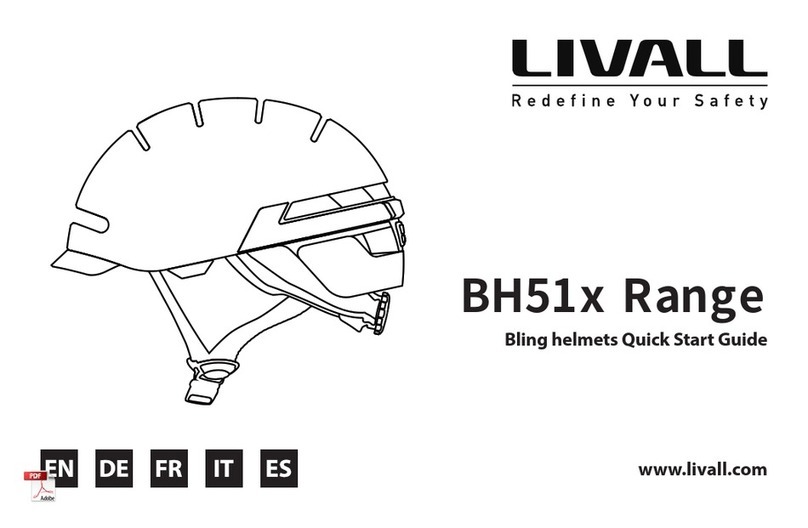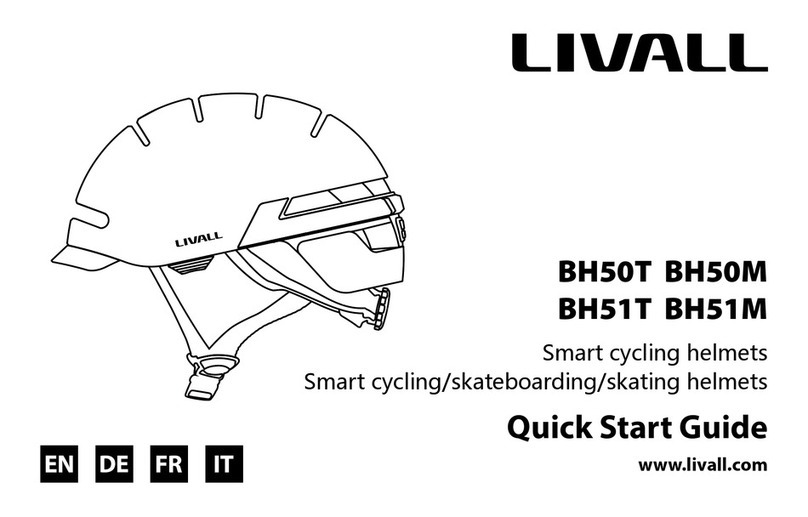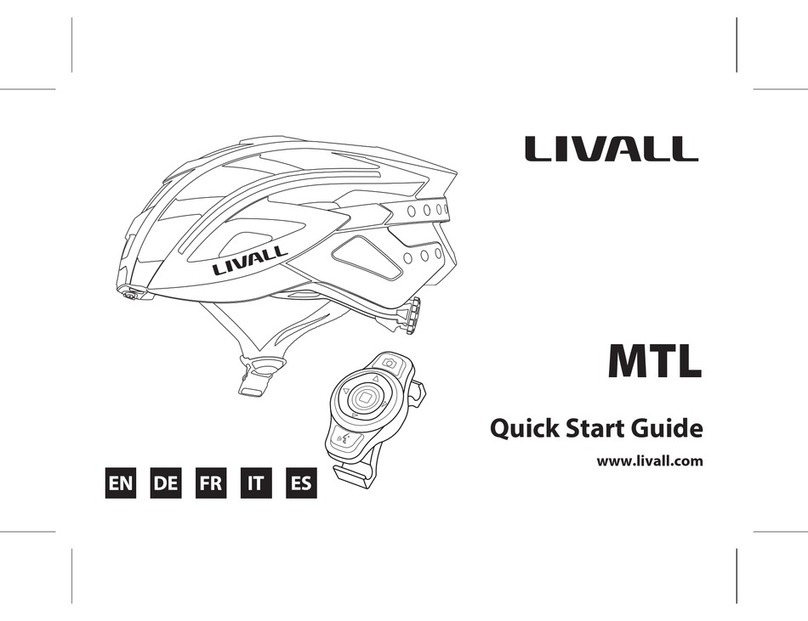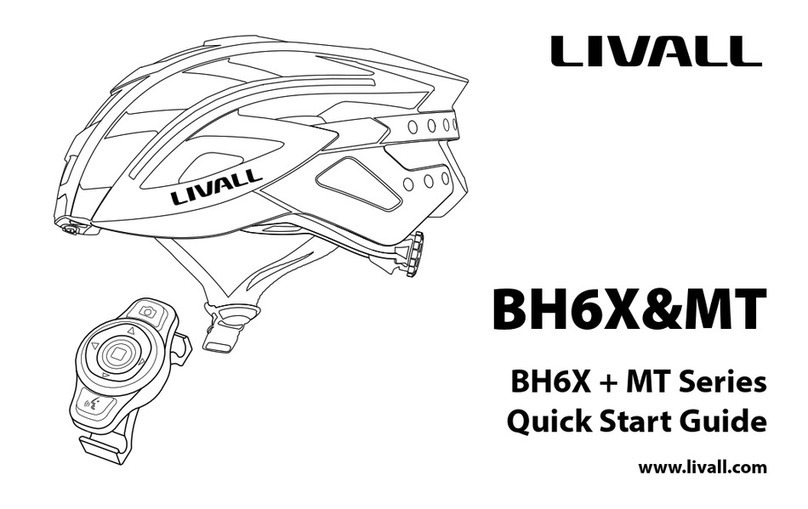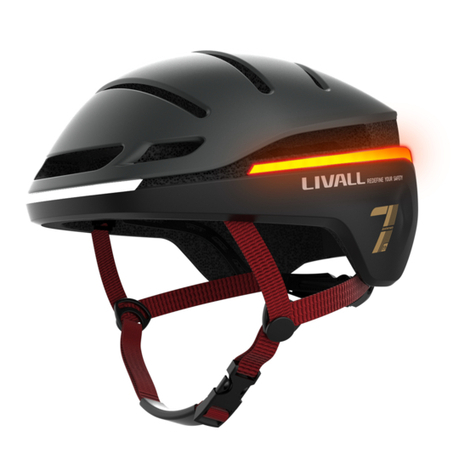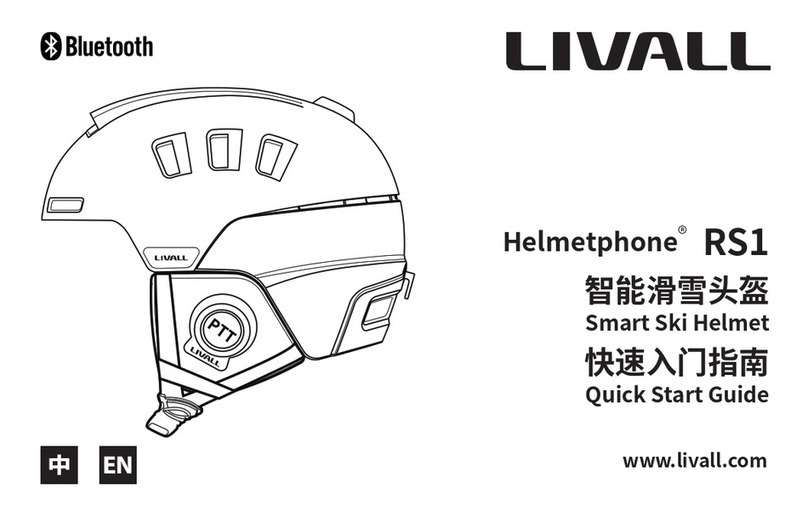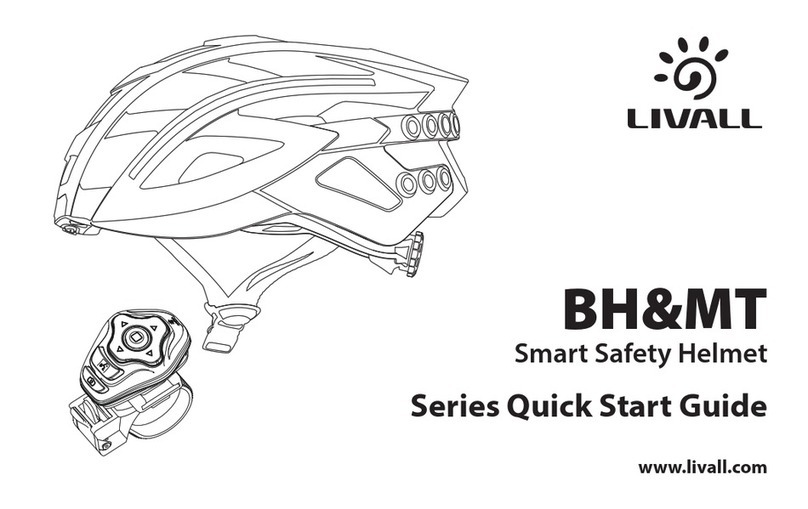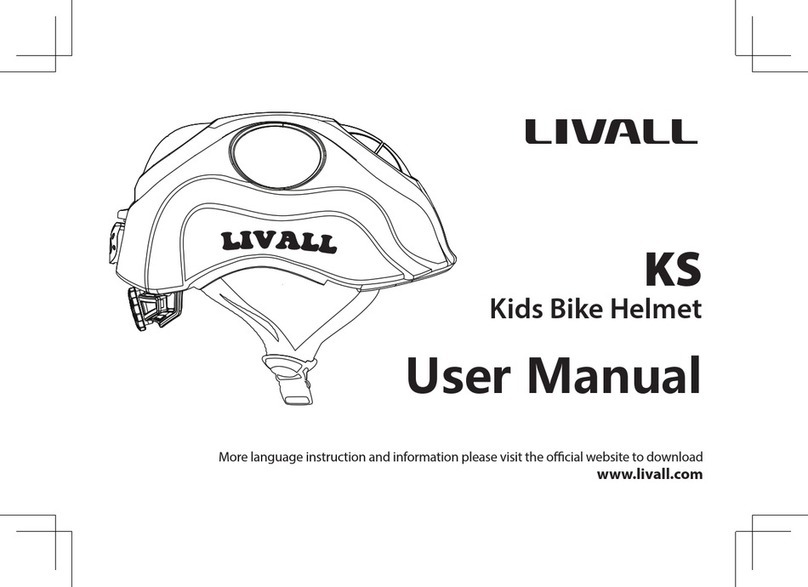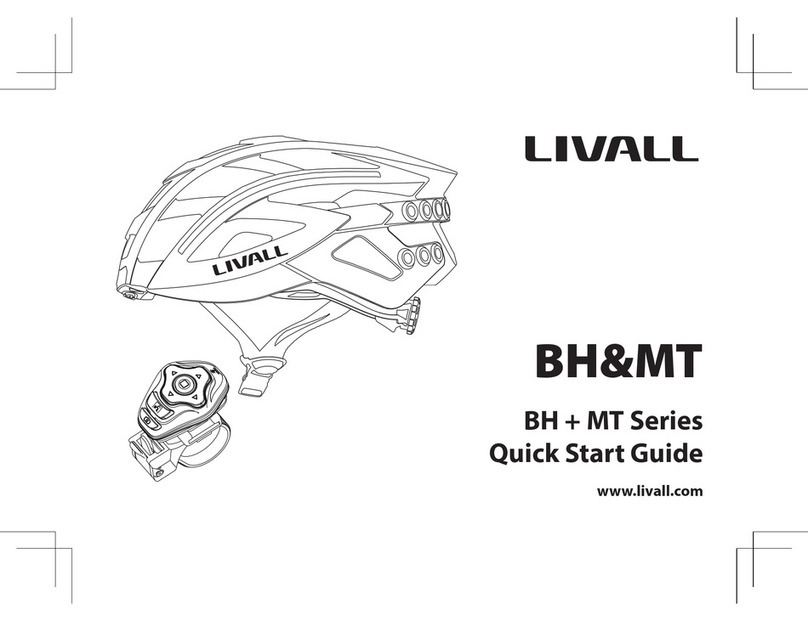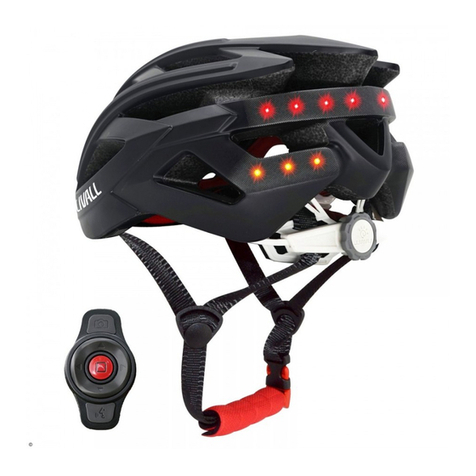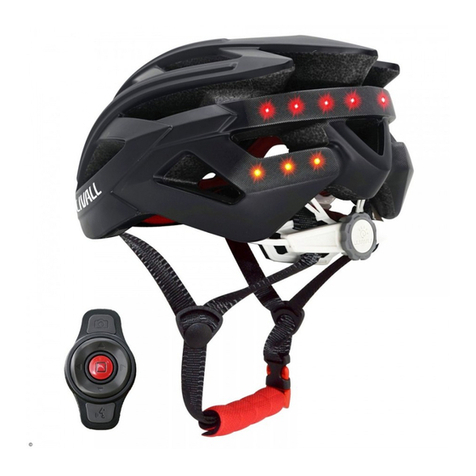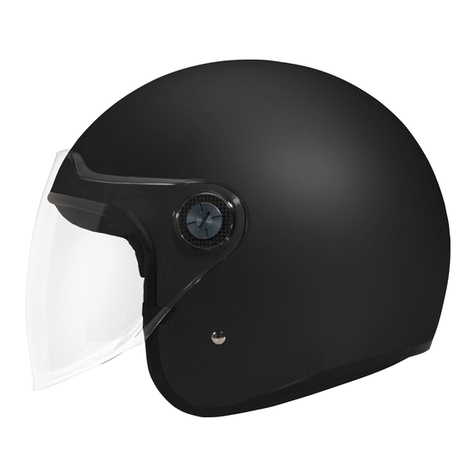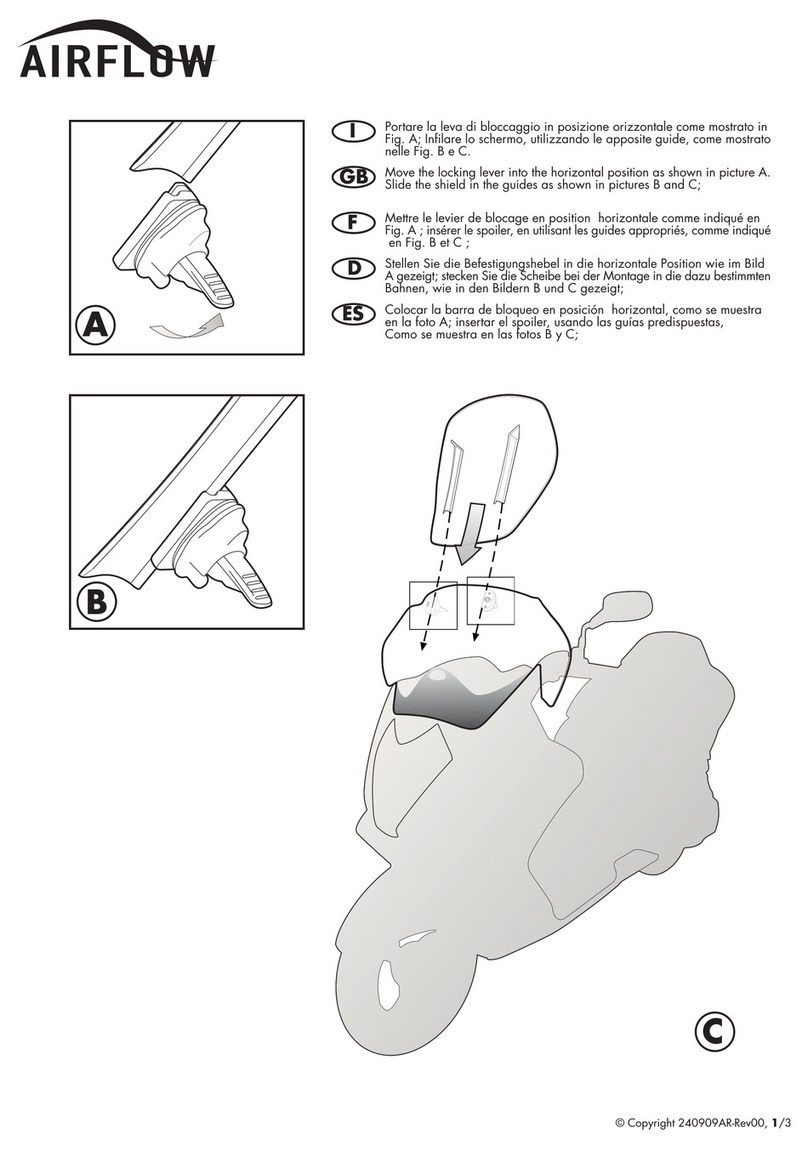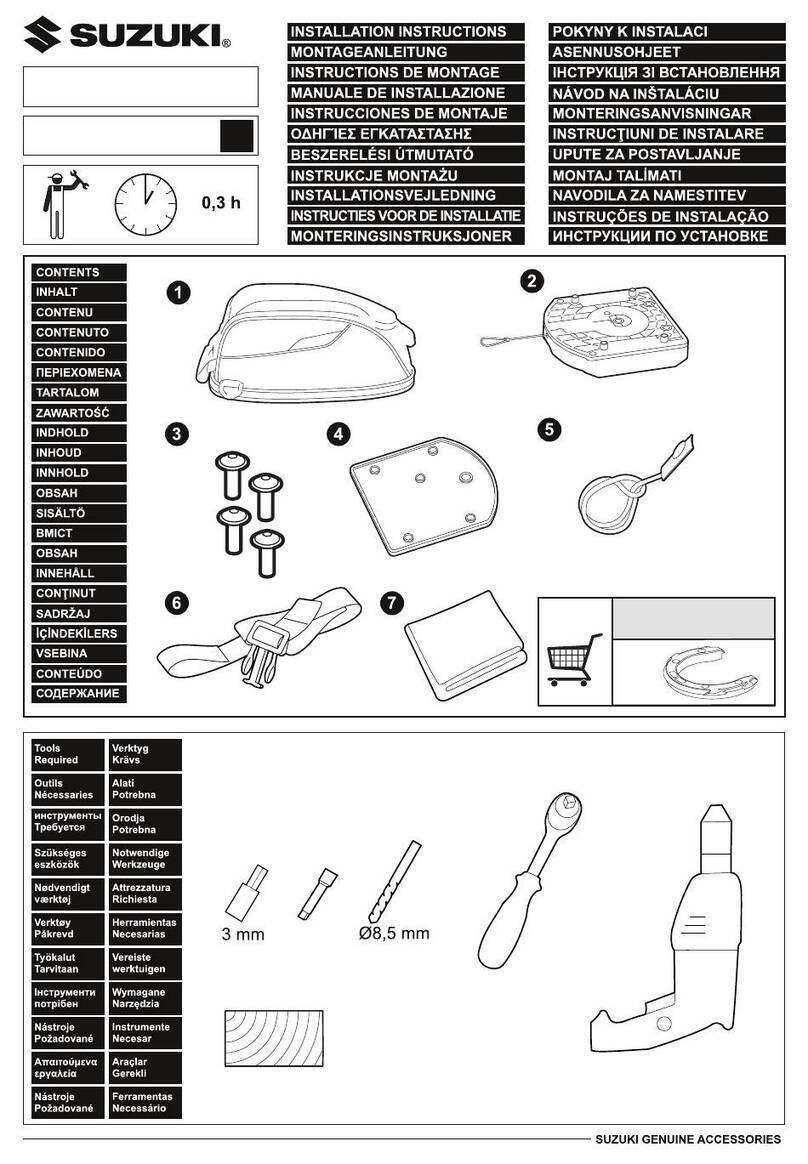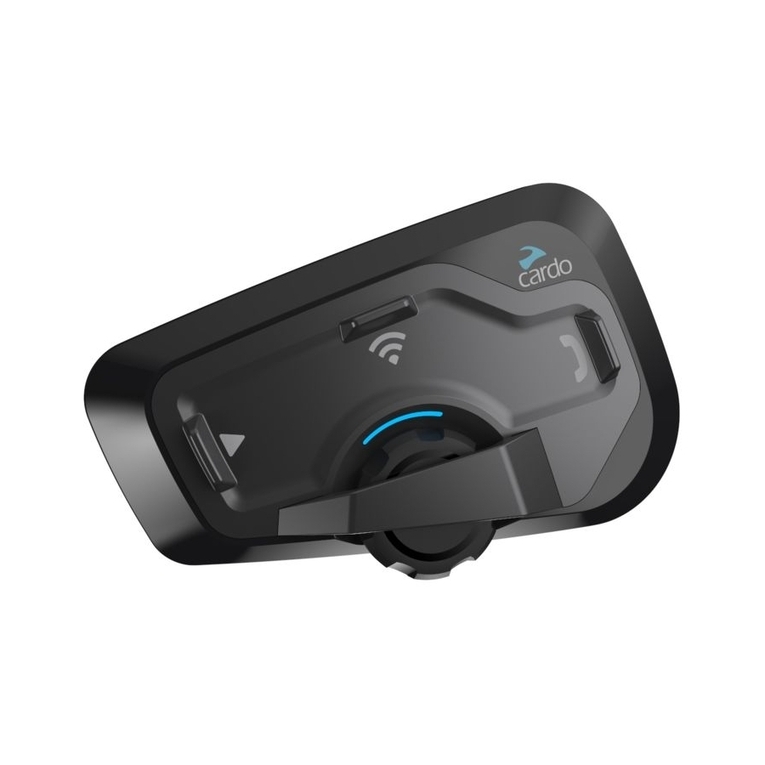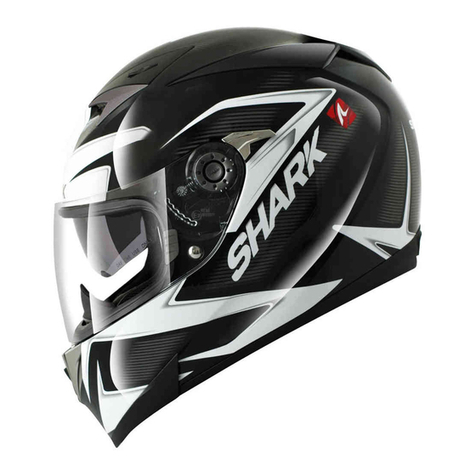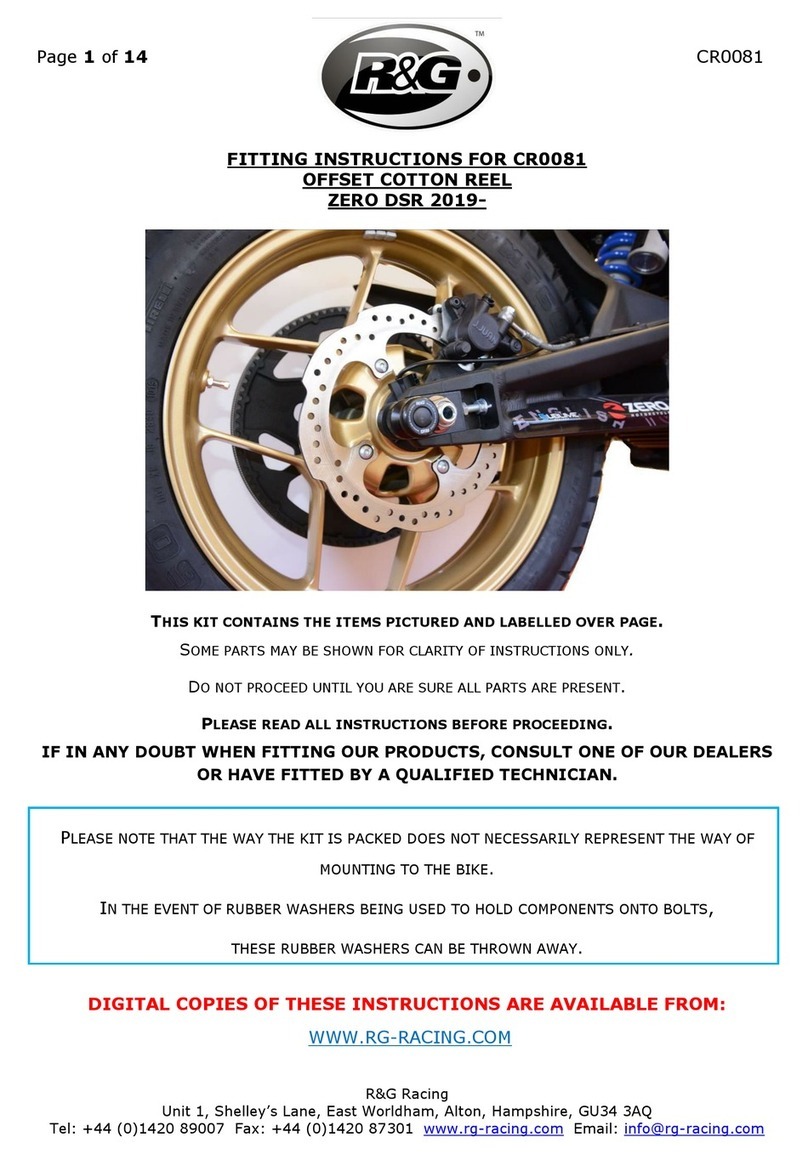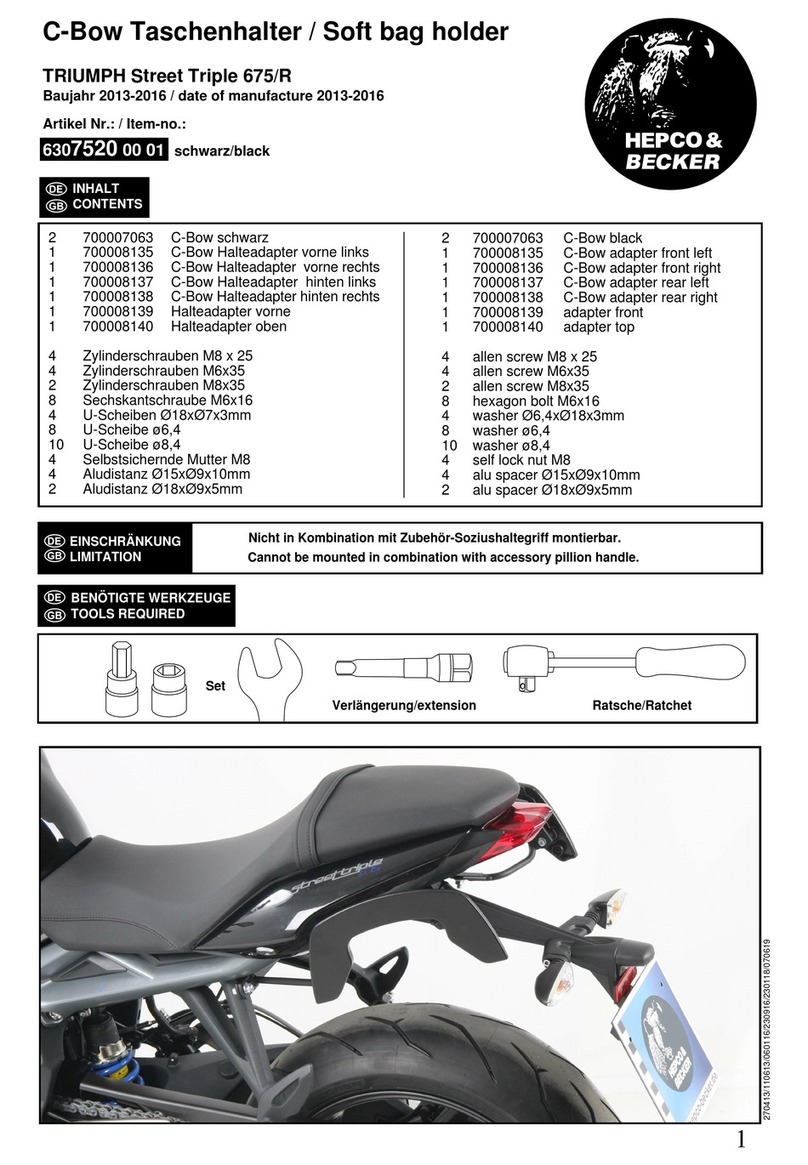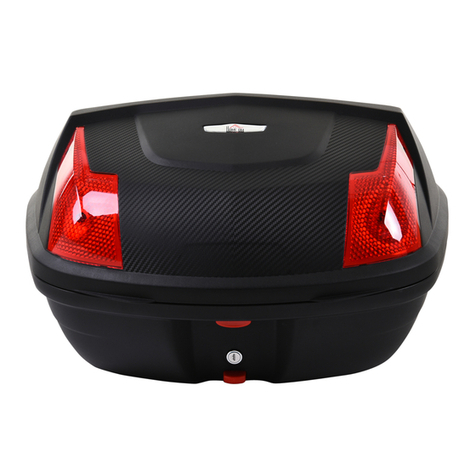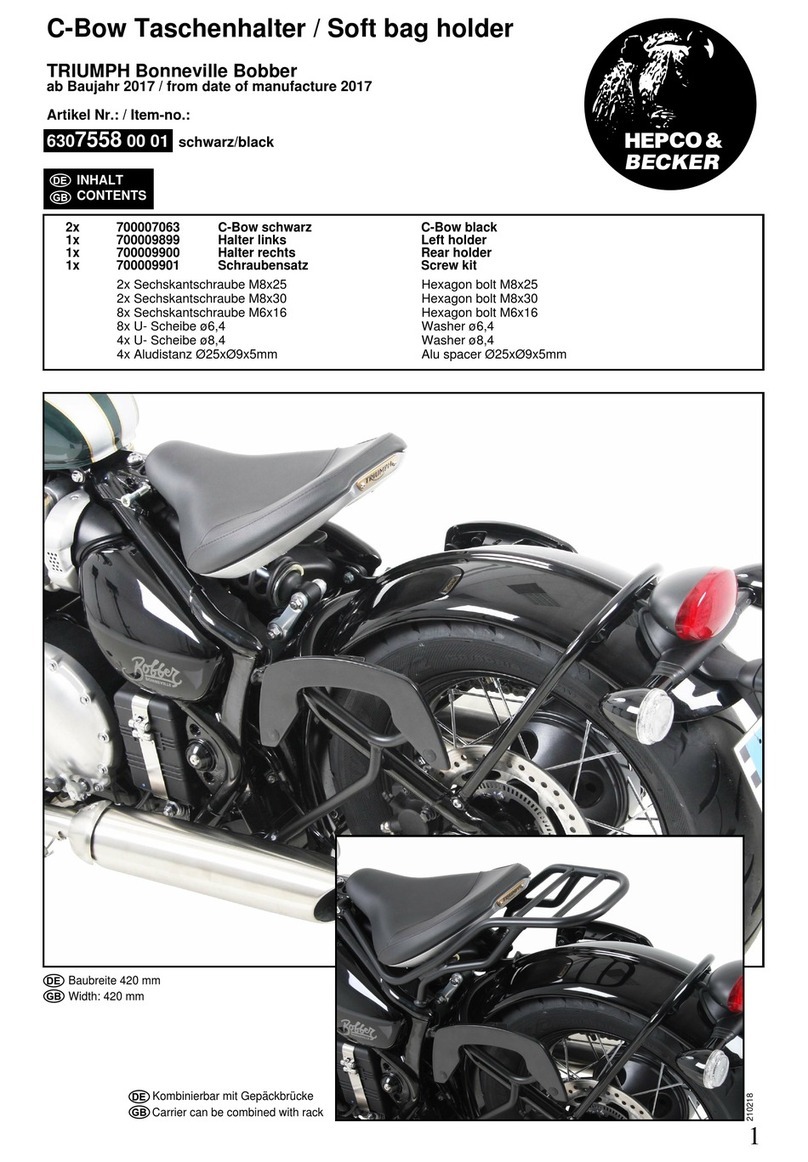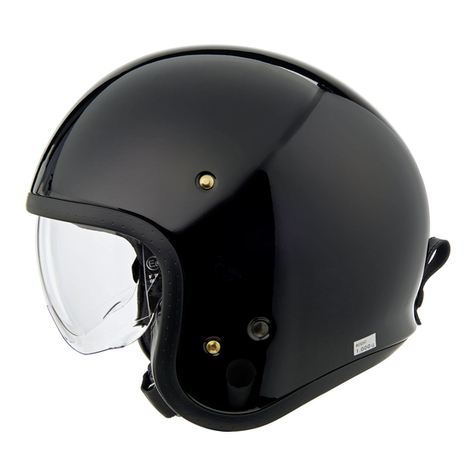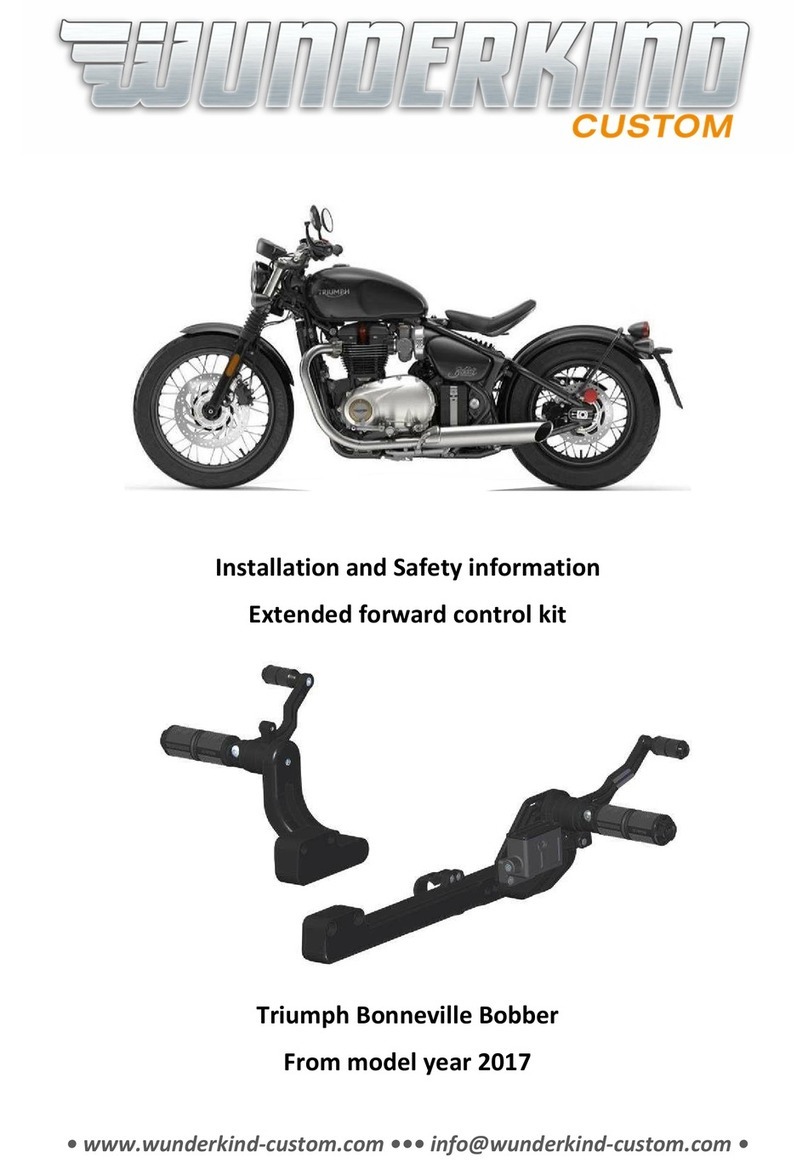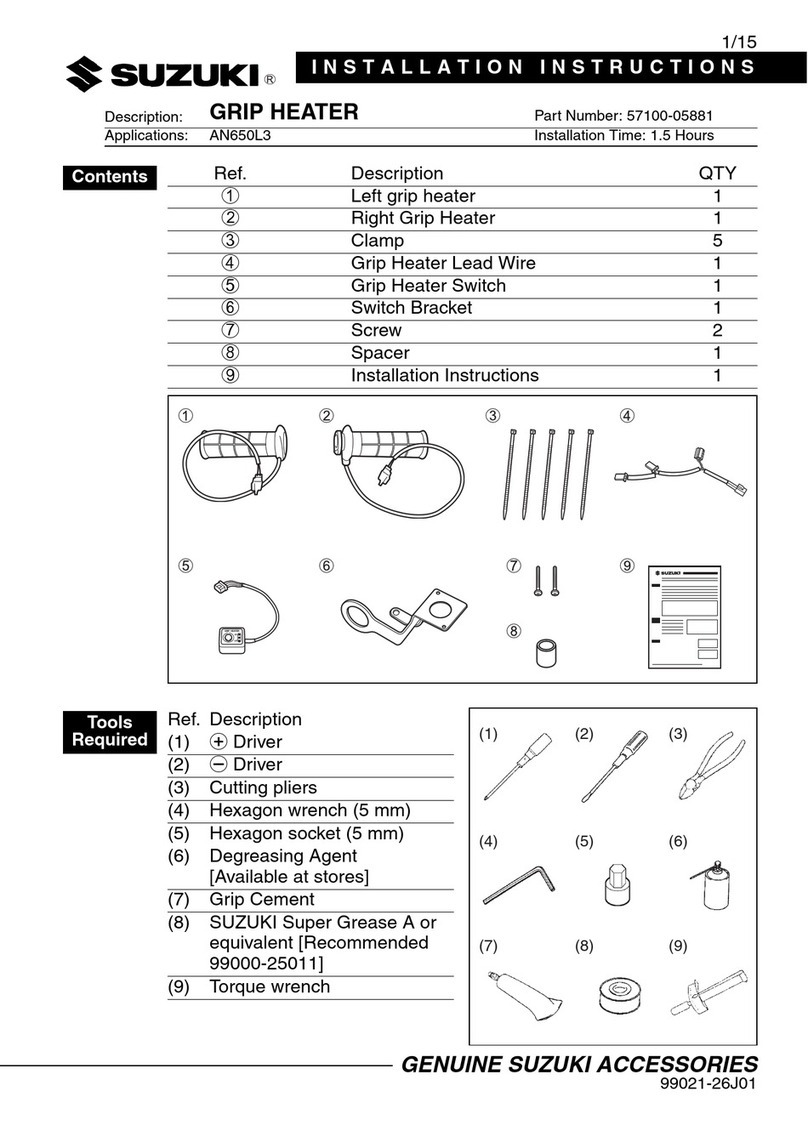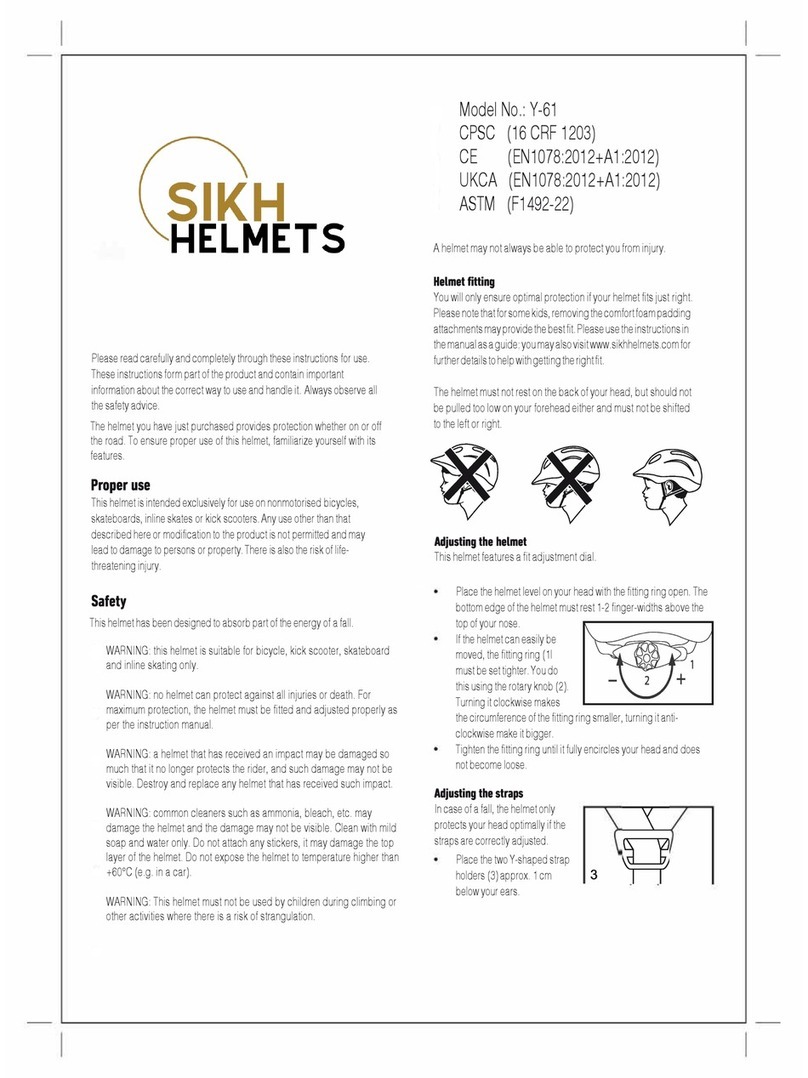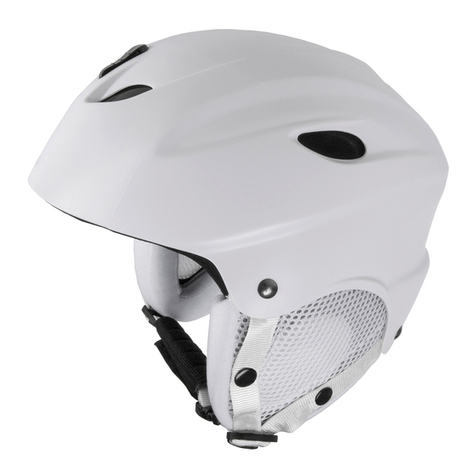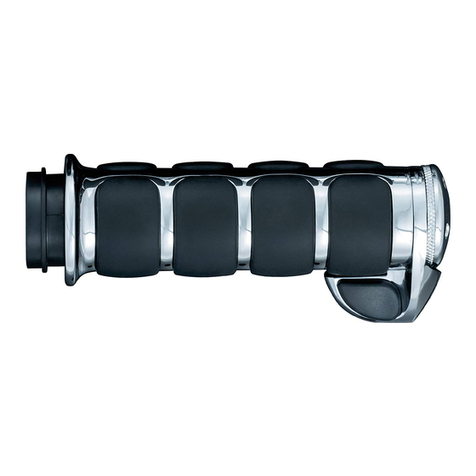
7
VI. Instructions for Use and Care
which feels secure and comfortable on the head.
2. That the helmet should be adjusted to fit the user e.g. the straps positioned so that they do not cover the ears, the
buckle positioned away from the jawbone and the straps and buckle adjusted to be both comfortable and firm.
3. How the helmet should be position on the head to ensure the intended protection is provided (e.g. that it should
be placed so as to protect the forehead and not be pushed too far over the back of the head.
4. That ahelmetcannot always protect against injury.
5. That ahelmetsubjected to a severe impact should be discarded and destroyed.
6. Astatement of the dangerof modifying or removing any of the original component parts of the helmetother
than as recommended by the manufacturer, and that helmets should not be adapted for the purpose of fitting
accessories in a way not recommended by the manufacturer.
Note:
1. Problems such as network anomalies, may result in the failure to successfully send or receive SOS messages.
storage (six months to one year).
6. The built-in battery is forbidden to be disassembled, squeezed, heated or burned. It is also forbidden to use
screwdrivers and other sharp devices breaking down or prying apart the battery. The above operationsmay make
the battery caught fire.
7. Please do not place the helmet with sharp objects, avoiding to damage the helmet.
8. The helmet contains impact detection devices. Only if you connect your helmet with LIVALL Riding App,
emergency contacts set on LIVALL Riding App can accordingly receive your SOS messages.
